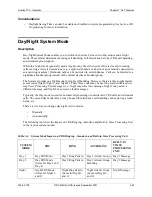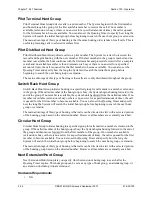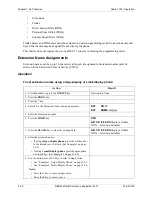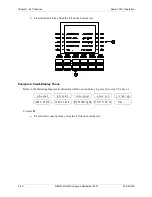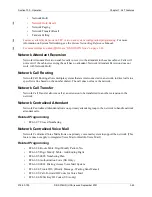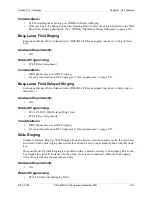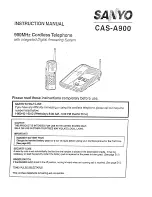
3-36
DBS 576HD (USA) issued September 2001
576-50-700
Chapter 7. SLT Features
Section 700 - Operation
Considerations
•
N/A
LAN TAPI
Description
LAN TAPI opens a line of communications between the DBS 576HD’s switching systems and a PC.
This is accomplished through the use of a Telephony Server connected to a LAN. Users on PCs can
use specific applications to send and receive information to and from the DBS 576HD via the LAN.
Using a software program called the Telephony Service Provider (TSP), call control information
(TAPI commands) is translated into commands that can be interpreted by the DBS 576HD. This
“open” communication between the PC and the telephone system allows the user to initiate and
handle calls via the application running on the PC.
Hardware Requirements
•
Windows NT network
•
Telephony Server connected to the network
•
Panasonic TSP software installed on the Telephony Server
•
PC (Windows 95/98 or NT operating system)
•
Supported TAPI application
Related Programming
•
See
Section 575 - LAN TAPI Installation
Considerations
•
N/A
MCO Tenant Group
Description
When the System is configured for tenant operation, MCO Tenant Group determines which trunks
groups are used for incoming and outgoing calls.
Each MCO trunk group is assigned to an MCO tenant group for incoming calls and for outgoing calls.
By default, Trunk Group 1 is assigned to MCO Tenant Group 1, Trunk Group 2 is assigned to MCO
Tenant Group 2, etc. for both incoming and outgoing calls.
For outgoing calls, each tenant group has 5 auto-trunk selections available. By default the first auto-
trunk selection is seized by entering
9
, the second by entering
81
, etc.
The number of MCO tenant groups available depends on the number of ports in the system as follows:
•
DBS 576HD:
• 96-port system: 1 to 12 MCO tenant groups


